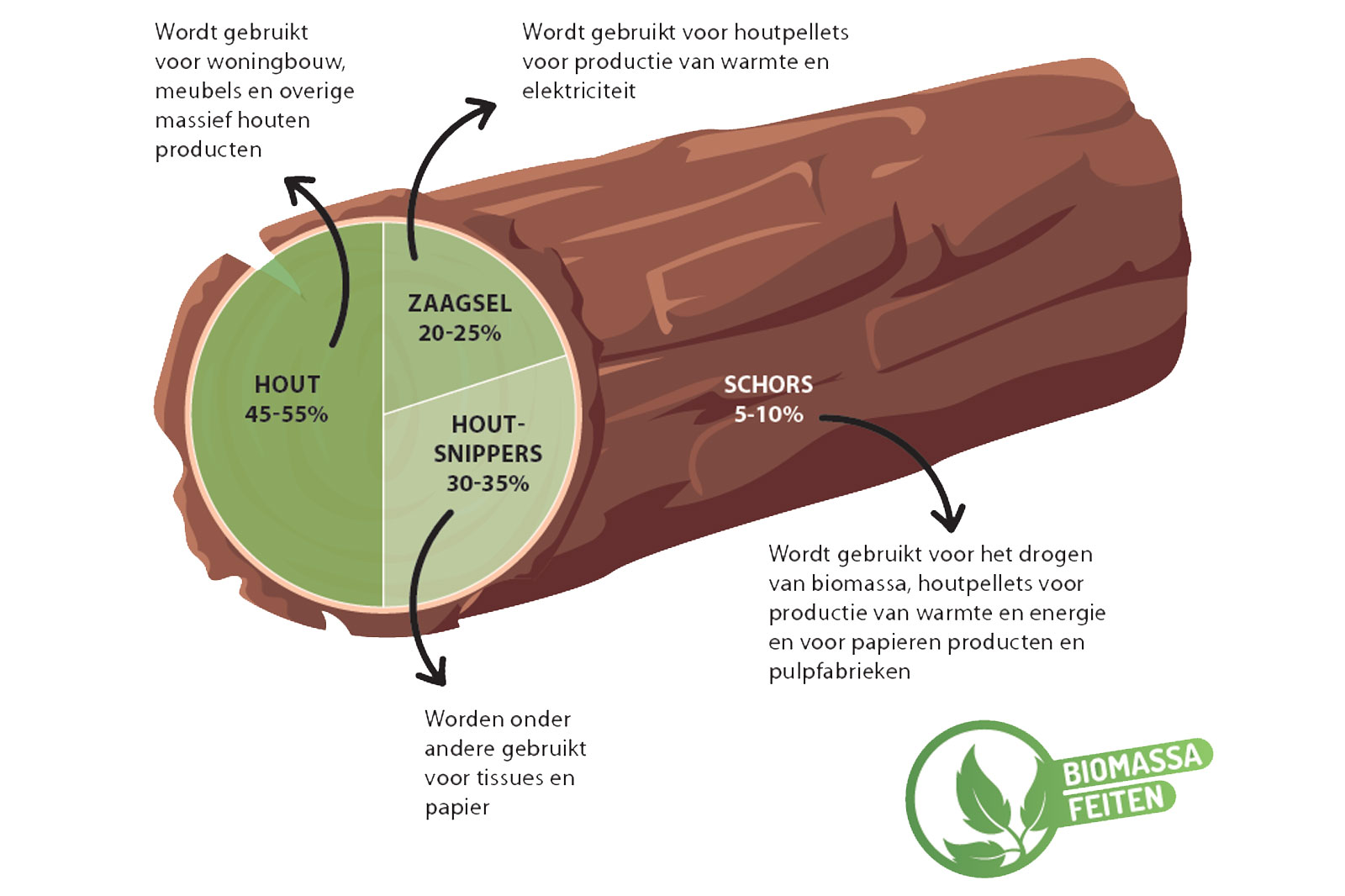For years, opponents such as the Clean Air Committee and chairman Fenna Swart have been claiming that the use of biomass is not sustainable. The government is now investigating whether and under what conditions biomass can play a role in carbon removal and meeting CO2 reduction targets. Today, the House of Representatives will vote on an amendment that aims to cut off this route.
For RWE, there can be no doubt about it: the use of biomass in the energy sector is a valuable and essential contribution to the energy transition in the Netherlands. It is a sustainable alternative to fossil fuels and, in conjunction with capture and storage, leads to the removal of CO2 from the air (Carbon Capture Storage) and reuse in the production of plastic, for example. Moreover, the biomass used to produce electricity in the Netherlands is a sustainable residual product derived from commercial forests.
Biomass is residual wood
Here's the thing: in many countries, wood is an agricultural product, just like sugar cane, maize and wheat. And just as wheat in the Netherlands is removed from the land from August onwards and leads to bare fields, the same happens in commercial forests. Large areas are regularly harvested. That wood is used for (toilet) paper, construction, making cabinets, desks and other furniture, and much more besides. Things that we all use every day. Harvesting and processing that wood generates millions of tons of residual products ranging from branches, thinnings and rotten and crooked trees to sawdust from sawmills. We call this residual wood and it accounts for about 5% of the felled tree. That residual wood is turned into biomass, a woody pellet that can be easily transported.
So biomass is not a loss of nature as opponents often claim, it is simply the harvesting of an agricultural product which is mainly carried out in vast countries such as the US, Canada and the Baltic States. In the Netherlands, we do not have space for large-scale commercial forests so it is logical that 95% of all the wood that we use in the Netherlands, in whatever form, is imported.
Biomass is sustainable
Timber producers ensure that as little usable wood as possible ends up as residual wood and therefore as biomass. Why? The price of usable wood is more than four times higher than the price of biomass. Thus, approximately 97% of biomass consists of sawdust pellets. In addition, it is a hard requirement in the Netherlands that biomass must be produced sustainably and used responsibly. This is closely monitored based on the Biomass Sustainability Covenant. Every year, CE Delft publishes a report which states whether energy producers have complied with the requirements. RWE gets green ticks every year. The same goes for the SDE++, check and approval by the Ministry of Economic Affairs and Climate. Also, as of 2025 the EU Deforestation Regulation will come into force. So we can – and do – clearly state that we use biomass in a responsible and sustainable way and it is therefore a form of renewable energy.
Approximately 40% of all the renewable energy in the Netherlands is produced at power plants using biomass. That is a significant amount: were we not to do that, we would have a big problem. Moreover, power plants that use biomass are able to do something special that cannot be done with wind and solar power: you can remove carbon dioxide from the air which we also refer to as BECCUS: Biobased Energy Carbon Capture Utilization Storage. The trees from commercial forests absorb CO2 and when the residual wood is burnt, the same CO2 is released again. By capturing and storing it in depleted gas fields or underground (CCS), net CO2 is removed from the air.
This is a proven technique: RWE has been successfully using biomass as a fuel for energy for years and with projects such as Porthos in the North Sea, CCS is also developing rapidly in the Netherlands. The IPCC also believes that this is essential in order to meet our CO2 reduction targets and the EU sees things that way too. In addition, in the near future we will be able to use the same CO2 as a raw material for the more sustainable production of fuels and plastics, instead of fossil fuels.
In short, dismissing the use of woody biomass in the Netherlands as harmful to the environment is nonsense and stopping the use of biomass is unwise and would lead directly to an increase in CO2 emissions.
Click here to find out even more facts about biomass.

